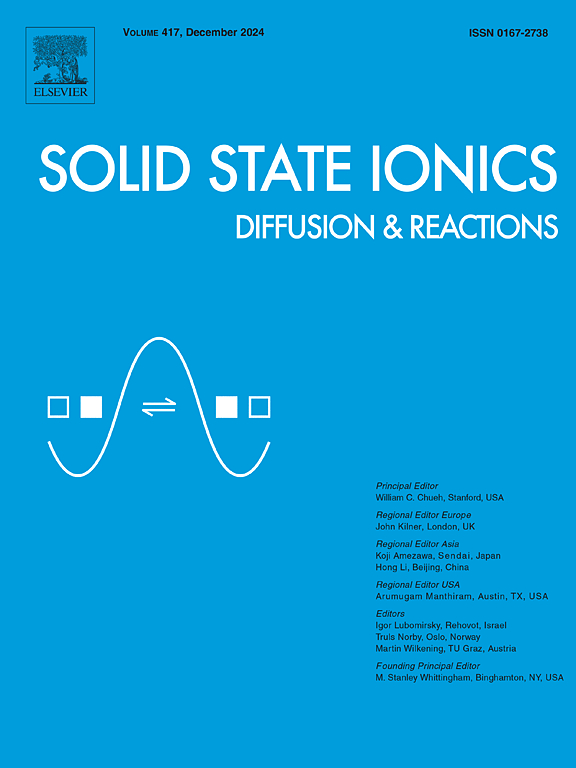Effects of material fabrication and current collector on the total conductivity of doped barium zirconates
IF 3.3
4区 材料科学
Q3 CHEMISTRY, PHYSICAL
引用次数: 0
Abstract
Doped barium zirconates (BaZrO3) are predominantly employed in protonic ceramic fuel cells and electrolysis cells. Electrochemical impedance spectroscopy (EIS) has been utilized to determine the total conductivity (σtot) of these materials. However, significant variations in σtot of doped BaZrO3 protonic ceramic electrolytes have been observed depending on materials fabrication processes and current-collecting materials. This study reviews how the fabrication process can influence the microstructure and physical characteristics of the final sintered doped BaZrO3 electrolytes, consequently their σtot. Symmetric cells were fabricated using BaZr0.8Y0.2O3-δ (BZY20) electrolyte with different current-collecting materials (Pt, Ag, and Ni) as electrodes, and varying σtot values were measured. The results were analyzed to identify primary and secondary factors contributing to the observed variations. Finally, this study proposes pathways to minimize the discrepancies in σtot arising from materials fabrications and current-collecting materials.
材料制备和集流器对掺杂锆酸钡总电导率的影响
掺杂锆酸钡(BaZrO3)主要用于质子陶瓷燃料电池和电解电池。利用电化学阻抗谱(EIS)测定了这些材料的总电导率(σtot)。然而,掺杂BaZrO3质子陶瓷电解质的σtot随材料制备工艺和集流材料的不同而有显著的变化。本文综述了制备工艺对最终烧结掺杂BaZrO3电解质的微观结构和物理特性的影响,以及对其σtot的影响。采用BaZr0.8Y0.2O3-δ (BZY20)电解质,以不同集流材料(Pt、Ag、Ni)为电极,制备了对称电池,并测量了不同的σtot值。对结果进行分析,以确定导致观察到的变化的主要和次要因素。最后,本研究提出了最小化由材料制造和集流材料引起的σtot差异的途径。
本文章由计算机程序翻译,如有差异,请以英文原文为准。
求助全文
约1分钟内获得全文
求助全文
来源期刊

Solid State Ionics
物理-物理:凝聚态物理
CiteScore
6.10
自引率
3.10%
发文量
152
审稿时长
58 days
期刊介绍:
This interdisciplinary journal is devoted to the physics, chemistry and materials science of diffusion, mass transport, and reactivity of solids. The major part of each issue is devoted to articles on:
(i) physics and chemistry of defects in solids;
(ii) reactions in and on solids, e.g. intercalation, corrosion, oxidation, sintering;
(iii) ion transport measurements, mechanisms and theory;
(iv) solid state electrochemistry;
(v) ionically-electronically mixed conducting solids.
Related technological applications are also included, provided their characteristics are interpreted in terms of the basic solid state properties.
Review papers and relevant symposium proceedings are welcome.
 求助内容:
求助内容: 应助结果提醒方式:
应助结果提醒方式:


